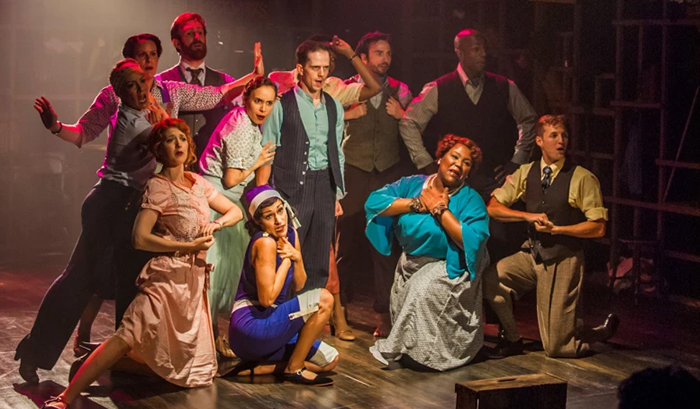Credulity Is Stretched Too Far
Knowing what I do about Western horses, and Indian history, I find it hard to believe anybody ever charged across a river at a fixed position. Horses don’t naturally take to water. If you ride into a body of water, with a horse unaccustomed to it, he may lie down and roll over (with rider on the horse). Or he may panic. An action-filled sequence in “The Wild Bunch” ended by tragically killing two poorly trained stunt riders, according to my good friend Gil Perkins. In the film, William Holden, Ernest Borgnine and Ben Johnson cross a bridge over the Rio Grande. They dynamite it to prevent Robert Ryan and his ragtag band of bounty hunters from following. Ryan and his riders are in the middle of the bridge when the dynamite charge goes off, sending a dozen riders plunging into the Rio Grande. According to Perkins, two of the horses panicked in the water. They tried to climb onto the backs of two riders who were then drowned.
A Grandmotherly Story
When I was only 11 years old, I stayed with my grandparents in the summer of 1951. I visited with my great grandmother, who lived only a few blocks away. She was born Eliza Jane Harper in Illinois in 1853. I was fascinated when she told me she had seen Abraham Lincoln campaign for the presidency in 1860. One day she told me about an incident that occurred when her family was crossing the plains to Washington in the 1870s. I can still vividly recall some details. According to my great-grandmother, the wagon master’s son was a braggart. He said he was going “to shoot the first Indian he saw.” Everybody believed he was just talking. The young man carried out his claim at a water hole in the middle of the plains. I t was a young woman washing her clothes at the water’s edge. Instead of attacking the wagon train, the Indians simply surrounded the water hole. They informed the wagon master that if his people wanted water, they had to hand over the killer of the young Indian woman. My great-grandmother told me the wagon master had to watch his own son be burned at the stake in order to protect the lives of the homesteaders he was leading.
A Word About the Jameses
Probably the most realistic account of the exploits of Frank and Jesse James is the 1971 Philip Kaufman epic, “The Great Northfield, Minnesota, Raid.” The book recounts how the James gang and the Younger Brothers tried to rob a bank in a small farming community with disastrous results. When the local farmers found out their bank was being robbed, they grabbed their long rifles. They started shooting. In those days, there was no such thing as Federal Deposit Insurance. It was really the farmers’ money the Jameses were making off with. I was told by one old-timer that Cole Younger had fourteen bullet holes when he was captured. He survived this ordeal, went to prison, eventually was pardoned. Later, he toured in a medicine show with Frank James at the turn of the century.







